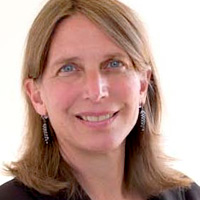AIDS is a legacy of our generation. Twenty-five million people have died. Another 33 million live with HIV. Unless we intervene, 20 million more will join their ranks over the next decade. For the first time, however, we are armed with new evidence to turn the tide on this epidemic. It is time to be bold. Our response at this critical moment will reflect who we are and what we value.
A simple yet revolutionary strategy known as "treatment as prevention" has recently been shown to be effective. We know that treatment is life-saving for people with AIDS. We know it also prevents mother-to-child infection.
Now, new evidence shows that early treatment prevents AIDS and fatal complications such as tuberculosis. In a breakthrough this year, scientists also found that treating people with HIV infection -- using drugs we already have -- prevents sexual transmission.
So, what are our obstacles?
First, less than half of infected people globally are aware of their infection. Second, some communities are disproportionately affected -- rates are seven times higher in black communities than in white ones -- and we must do more to reach them. But cost is the greatest impediment. Even though HIV medicines in poor countries have become 10 times cheaper, they remains too expensive.
